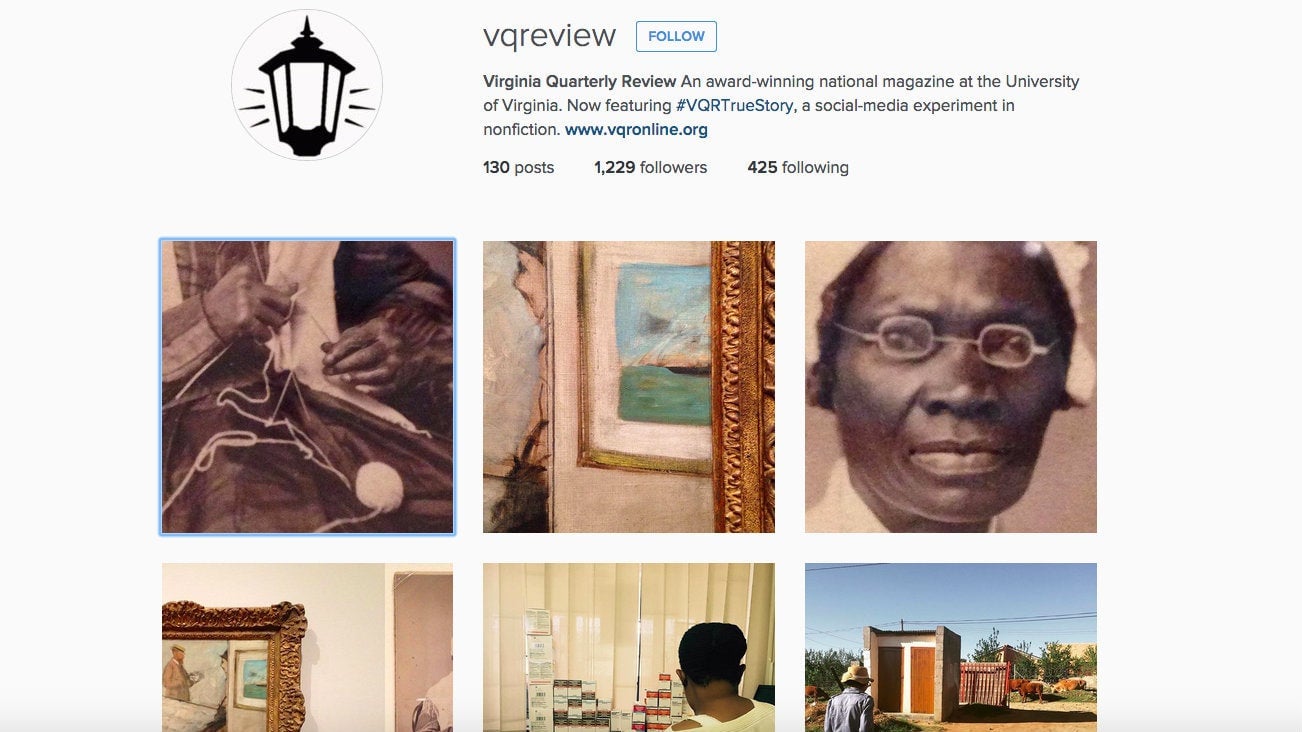Photos: Century-old literary magazines are innovating storytelling on Instagram
This year, magazines are set to struggle. As readers increasingly move online, print publications far and wide should expect to lose readers. But if you can’t beat them, join them—and by the looks of decades-old magazines sharing their content on Instagram, that’s exactly what several historic publications intend to do.


This year, magazines are set to struggle. As readers increasingly move online, print publications far and wide should expect to lose readers. But if you can’t beat them, join them—and by the looks of decades-old magazines sharing their content on Instagram, that’s exactly what several historic publications intend to do.
Virginia Quarterly Review, a 91-year-old literary magazine, told Harvard’s Nieman Lab that it’s planning a yearlong experiment in Instagram storytelling. Instead of simply posting photos from the magazine on the social media platform, it’s designing posts—both the images and the writing—specifically for Instagram.
In one post, a compelling black and white photograph is accompanied by a 250-word description of the photographer’s meeting with the subject: “‘I know you, man. I know you.’ I’ve yet to sit down. I assure him we’ve never met. ‘Naw, man, naw. I know you, man—I KNOW you.'” Then there are 18 hashtags, including #bullshit #makeupyourmind #crackstories and #amiacop.
The snapshots are published on the magazine’s Instagram account first, all with the hashtag #VQRTrueStory, but some will also be published on its website and in print.
VQR deputy editor Paul Reyes told Nieman Lab that he’s interested in how the Instagram format will develop. “I just want to see where the form takes itself,” he said. “I really do like the idea that this project would give the opportunity for certain practitioners to approach passion projects in a new way.”
And though Instagram is generally considered less high-brow than a print magazine, Reyes says it will not skimp on editorial quality.
“When I look back at all the posts a year from now, I want to see that they reflect the editorial values of a great general-interest magazine, and that they contain the same kind of variety, editorial integrity, and editorial commitment we practice at the magazine,” he added.
VQR is not the only historic publication showing an interest in Instagram. The New Yorker, also founded in 1925, has an official Instagram feed with 605,000 followers. So far, though, the magazine has taken a more conventional approach to the medium, and uses strong photo posts to encourage readers to click on the New Yorker website.
Or else the page encourages reader interaction, such as reposting photos of readers with the New Yorker magazine.
Meanwhile, the 63-year-old Paris Review posts photos of poems and interview snippets published in older issues.
And posts video clips from its film series, with the full film available on the magazine’s website.
Along with the occasional puppy photo…
Publishers’ interest in Instagram makes sense given what VQR contributor Neil Shea told Nieman Reports: “Instagram has essentially become one of the world’s most successful general interest magazines.”
And while Instagram may currently be known for launching a new genre of social media-friendly supermodels, Jeff Sharlet, a contributing editor at VQR and a Dartmouth professor, told Nieman Lab that Instagram’s format also presents new opportunities for writers.
“I’m interested in the snapshot aesthetic, in all the ways in which this breaks out of our convention, out of the golden age of longform, which really has never been more formulaic,” he said. “Instagram radically opens up who gets to tell stories by doing some of the same things for journalism that YouTube has done for video.”